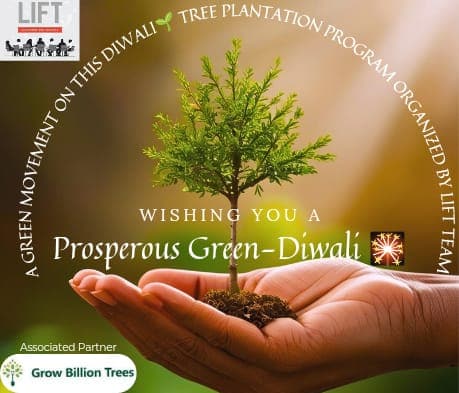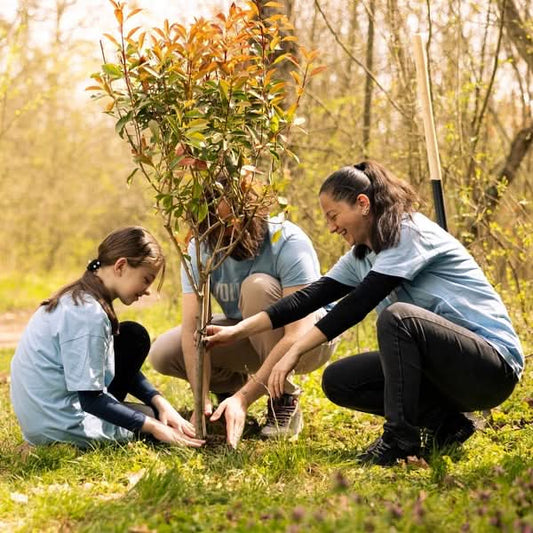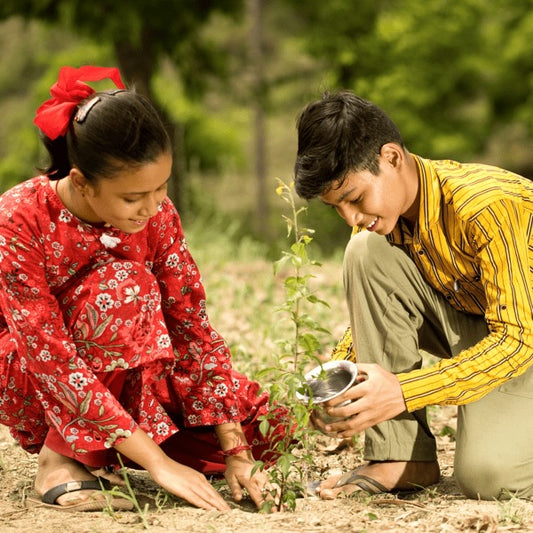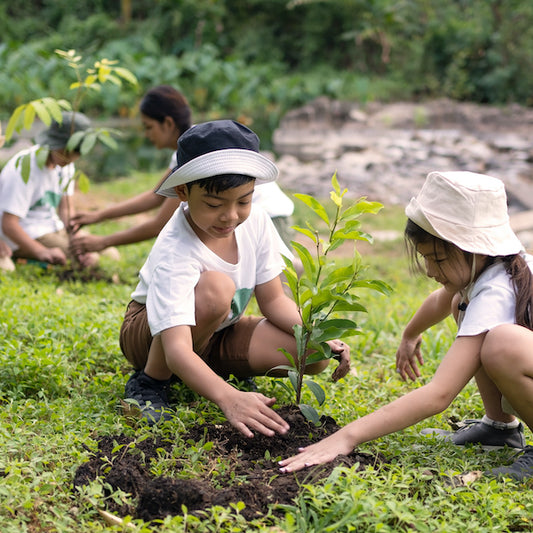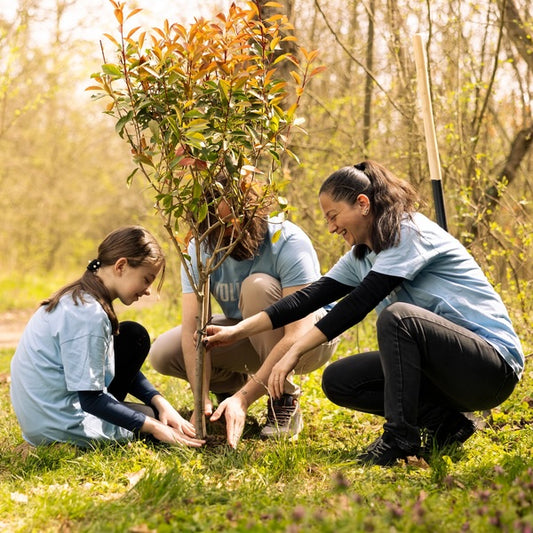Tally’s Agroforest Initiative: A Green Future for Farmers and the Environment
Tally, a leading technology and innovation company specializing in business software for Small and Medium Businesses (SMBs), is deeply committed to en Read more
Plantation Site Gallery
Project Update 1



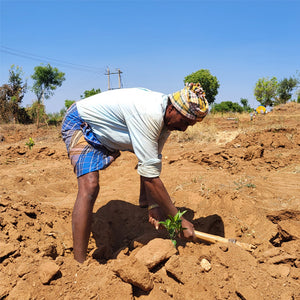
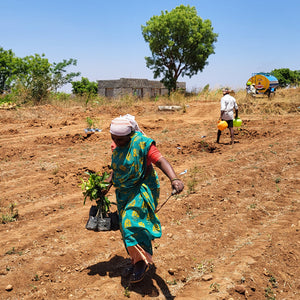
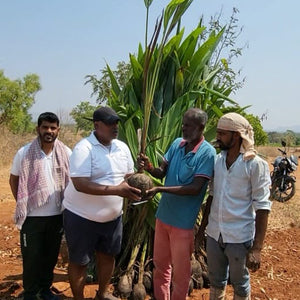

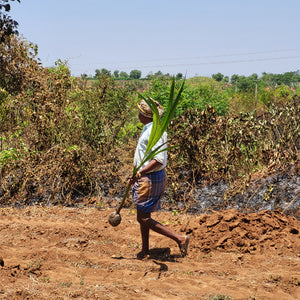

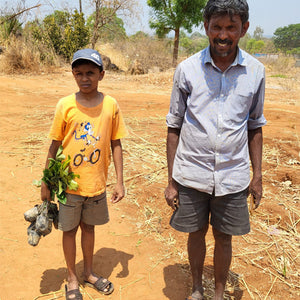
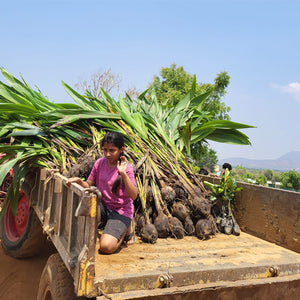
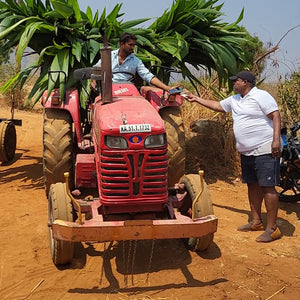
Digital Forest
Forest with 7,500 Trees planned
Want to plant your tree now?
Plant a Tree @ 299Trees Planted
Tally’s Agroforest Initiative: A Green Future for Farmers and the Environment
Tally, a leading technology and innovation company specializing in business software for Small and Medium Businesses (SMBs), is deeply committed to environmental sustainability through its corporate social responsibility (CSR) initiatives. As part of its commitment to promoting a greener and more sustainable future, Tally launched a tree plantation initiative based on the agroforestry concept. This initiative saw the planting of 7,500 trees in an agroforest format, a blend of agricultural and forestry practices that offers a host of benefits to both the environment and local communities.
The core focus of Tally's agroforestry program is its farmer-centric approach. By involving farmers directly in the plantation process, the initiative not only enhances agricultural productivity but also provides significant economic benefits for those involved. Agroforestry, which integrates trees with crops or livestock, helps improve soil health, enhance water retention, and reduce the dependency on chemical fertilizers. This sustainable farming practice creates a diversified income stream for farmers, allowing them to harvest both timber and non-timber products while simultaneously increasing their crop yields through improved soil quality and moisture retention.
Beyond the farmer-centric benefits, the agroforestry concept delivers numerous positive impacts for the environment and society as a whole. By planting 7,500 trees, Tally is contributing to biodiversity conservation, reducing soil erosion, and enhancing carbon sequestration. The initiative also supports the local ecosystem by creating habitat for wildlife and improving air quality. Furthermore, agroforestry helps mitigate the effects of climate change by reducing greenhouse gas emissions through the sustainable management of forests and agriculture.
Tally's CSR activities demonstrate the company's dedication to creating a positive social impact while promoting environmental sustainability. By investing in agroforestry, Tally is not only contributing to a greener world but also empowering farmers, enriching local communities, and paving the way for sustainable agricultural practices. This initiative showcases Tally’s commitment to the power of innovation and collaboration in addressing both business needs and global environmental challenges.
Project Planning & Execution
No of Trees: 7500
Plantation Location: Harihara Lake Rd, Harihara, Karnataka 562126
Plantation Date: 1st April 2024
Name of Species: Supari
Species Selection & Its Benefits
The initiative emphasises the plantation of native and economically beneficial tree species, ensuring long-term ecological resilience and rural empowerment. By aligning tree selection with local climatic conditions and farmer preferences, the project fosters environmental balance while generating sustainable income avenues. Active farmer participation in species choice ensures that the plantations blend effortlessly with existing agricultural systems, enhancing both productivity and biodiversity.
The project strategically selected Supari (Areca catechu) for plantation due to its diverse ecological and socio-economic advantages. Supari, a resilient and shade-tolerant species, prevents soil erosion and offers farmers a dependable long-term income source.
This thoughtful species selection enhances ecosystem health, promotes sustainable livelihoods, and reflects Tally’s commitment to environmental stewardship and inclusive rural development.
Beneficiaries Details
| SN | Farmer Name | Google Location | Village Name | Plot Size (In Acres) | Supari Planted |
| 1 | VR Prakash | https://short-url.org/1dhzK | Virupakshipura | 0.715 | 682 |
| 2 | Lingevada | https://short-url.org/1i1Q6 | Virupakshipura | 0.634 | 553 |
| 3 | Navin Putta Swami | https://short-url.org/1dhAu | Virupakshipura | 1.62 | 823 |
| 4 | Sidhhu Raju | https://short-url.org/1i1T9 | Virupakshipura | 1.2 | 1003 |
| 5 | Shree Nivash | https://short-url.org/1i1TD | Virupakshipura | 1.78 | 1500 |
| 6 | Padama | https://short-url.org/1dhE8 | Virupakshipura | 0.524 | 442 |
| 7 | Shivkumar | https://short-url.org/1i1UP | Virupakshipura | 1.08 | 900 |
| 8 | Lakshmamma | https://short-url.org/1i1Vd | Virupakshipura | 1.05 | 873 |
| 9 | Jaychandra SP | https://short-url.org/1dhFR | Sulleri | 0.33 | 280 |
Planting Methodology and Its Advantages
Agroforestry: Tally's tree plantation initiative in the agroforest concept is centered around empowering farmers, who are the core beneficiaries of agroforestry practices. By integrating trees with crops or livestock, this initiative offers farmers enhanced soil fertility, better water retention, and increased crop yields. The presence of trees also reduces the need for chemical fertilizers, promoting more sustainable farming. Agroforestry creates additional income streams for farmers through the harvest of timber, fruits, and non-timber forest products, contributing to their financial stability and resilience. Beyond these direct benefits to farmers, Tally's initiative helps mitigate climate change by sequestering carbon, preserving biodiversity, and reducing soil erosion, thus creating a more sustainable environment for the entire community. Through this CSR effort, Tally not only supports the agricultural sector but also nurtures environmental conservation and social well-being.
Advantages of Agroforestry
-
Increased Farmer Incomes: This approach helps in increasing the farmer’s income by as much as 3 times. Farmers benefit from diversified income sources, lifting economic resilience.
-
Improved Livelihoods: Agroforestry enhances farmers' resilience to economic and climate-related shocks by creating more sustainable and diversified farming systems.
-
Biodiversity Promotion: Agroforestry supports a diverse range of plants and animals, creating habitats for wildlife and improving ecosystem health.
-
Environmental Sustainability: This model reduces carbon emissions and promotes sustainable land management, aligning with SDG 13 (Climate Action) and SDG 15 (Life on Land).
-
Food Security: Agroforestry enhances agricultural productivity and food availability by integrating fruit-bearing trees with crops, contributing to SDG 2 (Zero Hunger).
-
Carbon Sequestration: Trees planted through agroforestry absorb carbon dioxide, helping reduce greenhouse gas emissions.
-
Climate Resilience: Agroforestry helps mitigate climate change impacts by improving land productivity and fostering biodiversity.
- Improved Soil and Water Management: Trees enhance soil fertility, reduce erosion, and increase water retention, resulting in more resilient farming.
Conclusion Elements
Impact
Direct Impact
| Parameters | Values | References |
| No. of Trees Planted | 7,500 | |
| Fruit Production Potential (Tons/Year) | 18.75 | |
| Income Generation Potential (Rs/Year) | ₹9,375,000 | |
| Carbon Sequestration Potential (KG) | 20 |
Small to medium-sized trees can sequester around 10–48 kilograms (22–106 pounds) of CO₂ annually. https://growbilliontrees.com/blogs/knowledge/how-much-co2-can-one-tree-absorb |
| Carbon Sequestration by 7500 mature trees ( Tons/year) | 150 Tons | No. of Trees x Carbon Sequestration by 1 mature trees per year |
| Carbon Credit Equivalent | 150 | One carbon credit is equivalent to one tonne of carbon dioxide or the equivalent amount of another greenhouse gas. |
| Carbon Footprint of an avg Indian Citizen (Tons/Year) | 1.8 | https://www.iea.org/countries/india/emissions |
| Offsets Annual Carbon Footprint of (Adults) | 83 | Carbon offset by 7500 mature trees per year / Carbon Footprint of an avg Indian Citizen per year |
(This impact analysis is forward-looking (An Agroforestry project matures in 3-5 years)
Reference for Annual Production and Income Estimates of 7500 Trees Planted
| SN | Plant Name | Fruit Selling Price (per KG in INR) | Annual Production per tree (in Kgs) | No. of Trees Planted | Total Yield (in Tons) | Total Income in 1 yr |
| 1 | Supari | ₹500 | 2.5 | 7,500 | 18.75 | ₹9,375,000 |
| Total | 18.75 | ₹9,375,000 |
Indirect Impact
Community Impact
-
Empowerment of Farmers: By providing training and resources for sustainable farming practices, agroforestry equips farmers with skills to enhance productivity and adapt to environmental changes.
-
Food Security: The integration of fruit-bearing trees and crops ensures a consistent food supply, improving nutrition and reducing hunger within the community.
-
Environmental Awareness: Community involvement in tree plantation fosters a sense of responsibility for environmental conservation and promotes sustainable practices in daily life.
-
Enhanced Social Equity: Agroforestry initiatives foster enhanced social equity by empowering marginalized farmers with sustainable livelihoods, bridging economic gaps, and promoting inclusive community participation in environmental conservation efforts.
-
Resilience to Climate Change: The diverse and sustainable nature of agroforestry helps communities mitigate the impacts of climate change, including extreme weather events, by stabilizing local ecosystems.
-
Health and Well-being: Green spaces created through agroforestry improve air quality and offer a healthier environment, contributing to the physical and mental well-being of the community
Environmental Impact
-
Carbon Sequestration: Trees act as carbon sinks, absorbing significant amounts of CO2 from the atmosphere, helping to mitigate climate change and reduce greenhouse gas emissions.
-
Soil Health Improvement: Agroforestry enriches soil through organic matter from fallen leaves and roots, improving fertility, structure, and nutrient availability for crops.
-
Erosion Prevention: Tree roots stabilize the soil, reducing erosion caused by wind and water while protecting nearby agricultural fields and water bodies.
-
Biodiversity Conservation: By creating habitats for various species, agroforestry enhances biodiversity, supporting pollinators, beneficial insects, and native wildlife.
-
Water Cycle Regulation: Trees improve water retention, recharge groundwater levels, and reduce surface runoff, contributing to a more balanced and sustainable water cycle.
- Microclimate Regulation: Agroforestry moderates temperature extremes, reduces wind speeds, and increases humidity, creating favorable conditions for crop growth and ecosystem balance.
Achievements
SDG Goals Achieved through Agroforestry
-
SDG 1: No Poverty – By integrating fruit-bearing trees into farmland, Tally's initiative creates a sustainable income source for farmers, strengthening financial security and reducing poverty in rural areas.
-
SDG 2: Zero Hunger – The agroforestry approach improves soil health, enhances agricultural productivity, and promotes sustainable farming, ensuring long-term food security for farming communities.
-
SDG 3: Good Health and Well-Being – Tree plantations help purify the air, enhance biodiversity, and contribute to a healthier ecosystem. By reducing carbon emissions and pollutants, Tally's tree plantation initiative supports respiratory health and overall well-being.
-
SDG 4: Quality Education – Tally supports knowledge-sharing on sustainable land management, empowering farmers with training on agroforestry techniques, conservation, and ecological restoration.
-
SDG 6: Clean Water and Sanitation – Agroforestry enhances groundwater recharge, prevents soil erosion, and reduces water runoff, contributing to better water conservation and ensuring long-term water availability.
-
SDG 8: Decent Work and Economic Growth – The initiative by Tally fosters employment opportunities in tree planting, farm management, and agro-processing, encouraging sustainable livelihoods and economic growth.
-
SDG 9: Industry, Innovation, and Infrastructure – Tally Tech promotes sustainable agricultural infrastructure by integrating innovative farming practices, enhancing productivity while reducing environmental impact.
-
SDG 10: Reduced Inequality – By supporting marginalized farmer families, Tally's project promotes income diversification and economic inclusion, reducing disparities in rural communities.
-
SDG 12: Responsible Consumption and Production – Sustainable agroforestry minimizes reliance on chemical inputs, promotes eco-friendly agricultural practices, and ensures responsible resource management.
-
SDG 13: Climate Action – Trees act as natural carbon sinks, mitigating climate change by absorbing CO₂, improving soil resilience, and reducing the impact of extreme weather conditions.
-
SDG 15: Life on Land – This initiative enhances biodiversity, prevents deforestation, restores degraded land, and strengthens ecosystem health through sustainable afforestation efforts.
-
SDG 17: Partnerships for the Goals – Tally's collaboration with Grow Billion Trees highlights the significance of partnerships in driving impactful environmental and social change. Through collective expertise and community engagement, this initiative contributes to long-term sustainability and ecological restoration.
ESG Achieved through Agroforestry
-
Environmental Impact: The Tally agroforestry initiative promotes sustainable afforestation, enhancing carbon sequestration, combating climate change, and improving air quality. By restoring soil fertility, preventing erosion, and supporting groundwater recharge, this initiative contributes to long-term ecological stability. Additionally, it fosters biodiversity by creating a thriving habitat for wildlife, reinforcing the company’s commitment to environmental conservation and responsible land management.
-
Social Impact: This initiative uplifts rural farming communities by creating additional income opportunities, enhancing food security, and building climate resilience. By integrating fruit-bearing trees into farmlands, farmers benefit economically through diversified revenue streams while reducing their reliance on single-crop agriculture. This approach lowers farming costs through natural soil enrichment, improves air and water quality, and fosters long-term environmental sustainability. The initiative also generates local employment and promotes community well-being by actively involving and educating farmers in sustainable practices, ultimately strengthening livelihoods and encouraging lasting environmental stewardship.
- Governance Impact: The Tally collaboration with Grow Billion Trees ensures ethical governance, transparency, and measurable impact. The initiative adheres to sustainable afforestation standards, with expert-led implementation and strategic execution. By embedding accountability and responsible corporate governance into its environmental efforts, the company reinforces stakeholder trust and sets a benchmark for sustainability-driven corporate leadership.
Building Communities
One of the most profound outcomes of the Tally agroforestry initiative was the sense of unity and collaboration it nurtured within the local community. By actively involving farmers, stakeholders, and environmental partners, the initiative transformed from a simple tree plantation drive into a shared mission for a greener, more sustainable future.
-
Empowering Farmers: The Farmer was not just a beneficiary but an active participant, gaining hands-on experience in sustainable agroforestry techniques. By integrating these practices into their traditional farming methods, he strengthened his economic stability and environmental resilience, ensuring long-term benefits for his livelihood and the ecosystem.
-
Fostering Partnerships: The project encourages active participation from the farmers throughout the plantation process, fostering a sense of ownership and collaboration in the community. Tally's collaboration with Grow Billion Trees and local farming communities demonstrated the power of collective action in driving meaningful environmental change. This synergy ensured expert-led execution, long-term sustainability, and tangible positive outcomes for both people and nature.
-
Creating a Ripple Effect: As farmers witnessed the economic and ecological benefits of agroforestry firsthand, their enthusiasm encouraged neighboring communities to adopt similar sustainable practices. This cascading effect expanded the initiative’s impact, turning a single project into a widespread movement for resilient and greener landscapes.
This initiative reaffirmed that true environmental sustainability is rooted in community-driven efforts. It was not just about planting trees; it was about planting hope, fostering collaboration, and building a shared vision for a healthier planet.
GBT Commitments
-
Sustainable Plantation Efforts: GBT implements projects that balance environmental, social, and economic goals, addressing issues like urban heat islands and degraded farmlands. These efforts promote ecological balance, livelihoods, and long-term climate resilience.
-
Enhancing Ecosystem Health: By selecting native species and creating diverse habitats, GBT enhances biodiversity and ecosystem resilience, ensuring long-term ecological health and supporting wildlife.
-
Ensuring Tree Survivability: GBT prioritizes native species, continuous monitoring, and soil health improvement using organic fertilizers. These efforts ensure sustainable growth and benefit the farmers and communities.
-
Transparency & Accountability: GBT provides detailed reports on tree growth, survival rates, and carbon benefits, using geo-fencing and regular updates to maintain transparency and effectiveness.
-
Long-Term Impact: GBT’s initiatives tackle environmental challenges, enhance rural livelihoods, foster climate resilience, and promote sustainable development while reducing carbon footprints.
Acknowledgement
We at Grow Billion Trees extend our heartfelt gratitude to everyone who contributed to the success of the agroforestry plantation initiative in Harihara, Karnataka, in collaboration with Tally. This project, which harmonizes environmental sustainability with community empowerment, would not have been possible without the dedication and collective efforts of key individuals.
To Tally: We sincerely appreciate your commitment to sustainability and social responsibility. Your initiative to plant 111 trees has not only contributed to environmental restoration but also laid the foundation for long-term benefits for the local farming community. Your dedication to fostering a greener future is truly commendable, and we are honored to partner with you in this meaningful endeavor.
To the Farmers: Your willingness to embrace agroforestry and integrate fruit-bearing trees into your farming practices has been truly commendable. This initiative not only enhances soil health but also contributes to long-term agricultural sustainability. Your commitment to improving the ecosystem while securing a better future for the coming generations is inspiring. We are honored to be part of this journey and look forward to the continued positive impact of your efforts.
To Our Ground Partners and Volunteers: Your unwavering support and commitment to environmental conservation have played a crucial role in making this project a success. Through collaboration and shared vision, we have taken a step toward a more sustainable and resilient future. Your contributions are deeply valued, and we thank you for being an essential part of this journey.
This initiative is just the beginning of our collective efforts to promote agroforestry and empower rural communities. Together, we will continue working toward a greener, more sustainable future for all.
Thank you for your unwavering commitment and support.
Closing Remarks
The successful completion of the agroforestry plantation at Harihara, Karnataka, marks a meaningful step toward environmental sustainability and community empowerment. This initiative has not only contributed to the region’s green cover but has also provided long-term benefits for the farmers by integrating sustainable agricultural practices. By enhancing soil fertility and offering an additional source of income through fruit production, the initiative strengthens economic stability, ensuring lasting benefits for the farming community. It stands as a testament to how collective efforts can create a positive impact on both livelihoods and nature.
With 7500 trees now thriving, this project will contribute to ecological restoration, biodiversity enhancement, and long-term financial support for the farmer. As we celebrate this achievement, we remain committed to promoting sustainable initiatives and encouraging more organizations to participate in similar impactful programs.
We extend our sincere appreciation to Tally, the farmers of Harihara, Karnataka, our partners, and all those who contributed to its commitment to sustainability by planting these trees as its global mission of healing the planet. Our gratitude also goes to the farmer, our partners, and everyone involved in making this vision a reality. Your dedication and contributions have been instrumental in ensuring the success of this initiative.
This is just the beginning of a broader movement towards a greener and more sustainable future. By continuing to collaborate, we can build a resilient environment and create a lasting legacy for the future.
Trees for Corporates
Trending
Most Popular
Agroforestry for Farmers
Agroforestry, or integrating trees into farming, is more than just a green trend; it’s a game-changer for farmers. Tally's initiative to plant 7,500 trees in an agroforest system isn't just about beautifying the land – it's about enriching the farmer’s wallet too! By adding trees to crops, farmers get a bounty of benefits like diversified income from timber, fruits, and other forest products. These trees also work as natural fertilizers, improving soil health and cutting down on costs for chemical inputs. Farmers see their resilience grow as these integrated systems help them manage risks like drought and floods. Tally's commitment to agroforestry makes farming smarter, not harder, and the results speak for themselves. It’s a win-win, offering both financial stability and environmental benefits – and let's be honest, who doesn’t love a little extra cash while saving the planet?
Sustainable Farming Practices
When you think sustainable farming, think Tally’s 7,500-tree initiative. Agroforestry isn’t just a buzzword – it’s a real solution for farmers looking to future-proof their livelihoods. Tally’s project marries technology with nature, showing that you don’t have to choose between profits and sustainability. By planting trees alongside crops, farmers can cut costs, improve soil fertility, and boost yields – all while helping the environment. Trees improve water retention and soil health, turning once-depleted farmland into a thriving ecosystem. With Tally's efforts, sustainable farming is less of a challenge and more of an opportunity. So, why not make your farm a sustainable success story too? The planet (and your wallet) will thank you!
Climate Change Mitigation with Agroforestry
Tally’s tree plantation initiative goes beyond creating greener landscapes; it’s a bold step in fighting climate change. Agroforestry systems, by integrating trees with crops, naturally absorb carbon dioxide, reducing greenhouse gas emissions. While farmers enjoy new income streams and better soil health, they’re also playing their part in climate change mitigation. The trees planted in Tally’s project act as carbon sinks, capturing and storing carbon for the long haul. Imagine it each tree planted is like a mini carbon-fighting machine, working tirelessly to reduce the impact of climate change. Tally’s initiative isn’t just about farming smarter; it’s about contributing to a global movement to fight climate change, one tree at a time.
Biodiversity in Agroforestry
Tally’s 7,500-tree agroforestry initiative isn’t just good for farmers; it’s great for biodiversity! When trees are added to farmlands, they provide a sanctuary for wildlife and beneficial insects. Trees attract pollinators like bees and butterflies, which in turn support crop production. Birds, small mammals, and even insects all thrive in these mixed ecosystems, creating a balanced environment that promotes both farm productivity and nature conservation. So, while farmers reap the financial rewards of a diversified farming system, they’re also fostering a rich, biodiverse environment that benefits the planet. It’s a beautiful example of how Tally is helping farmers grow not just crops, but thriving ecosystems.
Agroforestry and Soil Health
Let’s face it – soil is the backbone of farming. Without it, crops wouldn’t stand a chance. Tally’s agroforestry initiative knows that healthy soil is key to healthy crops. By planting trees alongside agricultural products, farmers can benefit from the natural power of trees to improve soil health. Tree roots stabilize the soil, reduce erosion, and increase water retention – essentially giving farmers a stronger, more resilient foundation to grow their crops. This leads to higher yields and fewer inputs for fertilizers and pesticides. So, Tally isn’t just planting trees – they’re planting the foundation for a future of farming success!
Farmer Income Diversification
Tally’s agroforestry initiative isn’t just about trees; it’s about creating a financial safety net for farmers. When you add trees to a farming system, you diversify income streams. Farmers no longer rely solely on crops; they can sell timber, fruits, and nuts. This diversification provides a buffer against price fluctuations and crop failures, offering more stability and less financial risk. Tally’s commitment to this approach empowers farmers to make their livelihoods more robust. With agroforestry, income diversification is not just a benefit – it’s a smart way to secure a farmer's future. Who knew that a little bit of greenery could grow into a lot of green in the pocket?
Agroforestry as a Resilience Builder
In today’s unpredictable climate, resilience is key for farmers. Tally’s tree planting initiative is all about helping farmers adapt and thrive in the face of change. By integrating trees into farming systems, Tally builds resilience in two ways first, trees provide shade and wind protection, reducing the risks posed by extreme weather conditions. Second, agroforestry systems improve soil fertility and water retention, which is crucial during droughts or heavy rains. Farmers who adopt agroforestry are better equipped to handle challenges and remain successful, even when nature throws a curveball. So, Tally’s initiative isn’t just green – it’s about green solutions for resilient farming.
Agroforestry and Water Conservation
Water is precious, especially in farming. That’s why Tally’s agroforestry initiative is so valuable – it helps conserve water. The trees planted alongside crops in agroforestry systems play a huge role in water retention. Their roots help prevent runoff, ensuring that water stays where it’s needed most – in the soil. Additionally, trees improve the overall water-holding capacity of the land, which is especially beneficial during dry spells. For farmers, this means more reliable access to water, better crop yields, and reduced irrigation costs. With Tally’s focus on agroforestry, water conservation is more than just a nice idea; it’s a practical, beneficial reality for sustainable farming.
FAQ
What is agroforestry and how does it benefit farmers?
Agroforestry is the integration of trees with crops or livestock to create more sustainable farming systems. Tally’s initiative in agroforestry benefits farmers by providing income diversification through timber, fruits, and other tree products, which helps reduce dependency on a single crop. Additionally, trees improve soil health, conserve water, and protect crops from extreme weather conditions, ensuring more resilient and profitable farming. This approach promotes long-term environmental and economic benefits for farmers.
What is Tally’s role in promoting agroforestry?
Tally is committed to supporting sustainable farming practices through its tree plantation initiatives. By planting 7,500 trees in an agroforest format, Tally helps farmers diversify their income and improve land productivity. We provide both the resources and the expertise to implement agroforestry systems that benefit farmers in the long run. Our efforts are a key part of our CSR strategy, contributing to both environmental sustainability and the betterment of farming communities.
How many trees has Tally planted in its agroforestry initiative?
Tally has successfully planted 7,500 trees as part of our agroforestry initiative. This project helps farmers gain additional income streams while contributing to climate change mitigation and biodiversity conservation. By planting trees alongside agricultural crops, we are working to ensure sustainable agricultural practices that benefit the land, the farmers, and the environment.
Why is tree plantation important for farmers?
Tree plantation in agroforestry is crucial for farmers as it provides multiple benefits. Trees offer shade, reduce soil erosion, improve water retention, and increase biodiversity. They also help farmers diversify their income through the sale of timber, fruits, or nuts. These practices increase resilience against climate risks, boosting both the financial and environmental sustainability of farming operations.
What impact does agroforestry have on soil health?
Agroforestry improves soil health by preventing erosion, enhancing organic matter, and increasing soil fertility. The roots of trees help to anchor the soil, reducing runoff and improving water retention. This leads to healthier crops and less reliance on chemical fertilizers, ultimately creating a more sustainable and cost-effective farming system.
How does agroforestry contribute to climate change mitigation?
Agroforestry helps mitigate climate change by sequestering carbon in trees, which absorb CO2 from the atmosphere. Tally’s agroforestry initiative, through planting 7,500 trees, contributes to carbon sequestration, helping to reduce the overall carbon footprint of farming practices. Additionally, the improved soil health and biodiversity fostered by agroforestry help create ecosystems more resilient to the effects of climate change.
What are the economic benefits of agroforestry for farmers?
Agroforestry provides significant economic benefits for farmers by offering diversified income streams. Farmers can generate revenue from timber, fruits, and other by-products of trees, reducing the financial risks associated with monoculture farming. This income diversification helps farmers stay financially stable during lean seasons or market fluctuations, ensuring greater economic security.
How does Tally’s tree plantation initiative help local communities?
Tally’s tree plantation initiative helps local communities by providing farmers with the tools and resources to implement agroforestry practices, creating more resilient and sustainable agricultural systems. The program enhances food security, offers additional income sources, and improves environmental conditions, such as soil health and water conservation, directly benefiting the local communities involved.
What species of trees are used in Tally’s agroforestry initiative?
Tally’s agroforestry initiative doesn’t leave the selection of tree species up to individual farmers but instead works with environmental experts to determine the best tree varieties suited for each region. This ensures that the trees planted are not only beneficial to the environment but also complement the farmers' existing crops, maximizing productivity and sustainability.
How does agroforestry improve water conservation?
Agroforestry systems significantly improve water conservation by enhancing soil structure, which increases water retention and reduces runoff. The roots of trees help trap water in the soil, preventing erosion and ensuring that crops have a reliable water source, even during dry spells. Tally’s agroforestry initiative supports water conservation by planting trees that contribute to more sustainable farming practices.
- Choosing a selection results in a full page refresh.
- Opens in a new window.



